Qi Qian
Enhancing Model Privacy in Federated Learning with Random Masking and Quantization
Aug 27, 2025Abstract:The primary goal of traditional federated learning is to protect data privacy by enabling distributed edge devices to collaboratively train a shared global model while keeping raw data decentralized at local clients. The rise of large language models (LLMs) has introduced new challenges in distributed systems, as their substantial computational requirements and the need for specialized expertise raise critical concerns about protecting intellectual property (IP). This highlights the need for a federated learning approach that can safeguard both sensitive data and proprietary models. To tackle this challenge, we propose FedQSN, a federated learning approach that leverages random masking to obscure a subnetwork of model parameters and applies quantization to the remaining parameters. Consequently, the server transmits only a privacy-preserving proxy of the global model to clients during each communication round, thus enhancing the model's confidentiality. Experimental results across various models and tasks demonstrate that our approach not only maintains strong model performance in federated learning settings but also achieves enhanced protection of model parameters compared to baseline methods.
MMTok: Multimodal Coverage Maximization for Efficient Inference of VLMs
Aug 25, 2025Abstract:Vision-Language Models (VLMs) demonstrate impressive performance in understanding visual content with language instruction by converting visual input to vision tokens. However, redundancy in vision tokens results in the degenerated inference efficiency of VLMs. While many algorithms have been proposed to reduce the number of vision tokens, most of them apply only unimodal information (i.e., vision/text) for pruning and ignore the inherent multimodal property of vision-language tasks. Moreover, it lacks a generic criterion that can be applied to different modalities. To mitigate this limitation, in this work, we propose to leverage both vision and text tokens to select informative vision tokens by the criterion of coverage. We first formulate the subset selection problem as a maximum coverage problem. Afterward, a subset of vision tokens is optimized to cover the text tokens and the original set of vision tokens, simultaneously. Finally, a VLM agent can be adopted to further improve the quality of text tokens for guiding vision pruning. The proposed method MMTok is extensively evaluated on benchmark datasets with different VLMs. The comparison illustrates that vision and text information are complementary, and combining multimodal information can surpass the unimodal baseline with a clear margin. Moreover, under the maximum coverage criterion on the POPE dataset, our method achieves a 1.87x speedup while maintaining 98.7% of the original performance on LLaVA-NeXT-13B. Furthermore, with only four vision tokens, it still preserves 87.7% of the original performance on LLaVA-1.5-7B. These results highlight the effectiveness of coverage in token selection.
Progressive Mastery: Customized Curriculum Learning with Guided Prompting for Mathematical Reasoning
Jun 04, 2025Abstract:Large Language Models (LLMs) have achieved remarkable performance across various reasoning tasks, yet post-training is constrained by inefficient sample utilization and inflexible difficulty samples processing. To address these limitations, we propose Customized Curriculum Learning (CCL), a novel framework with two key innovations. First, we introduce model-adaptive difficulty definition that customizes curriculum datasets based on each model's individual capabilities rather than using predefined difficulty metrics. Second, we develop "Guided Prompting," which dynamically reduces sample difficulty through strategic hints, enabling effective utilization of challenging samples that would otherwise degrade performance. Comprehensive experiments on supervised fine-tuning and reinforcement learning demonstrate that CCL significantly outperforms uniform training approaches across five mathematical reasoning benchmarks, confirming its effectiveness across both paradigms in enhancing sample utilization and model performance.
Customized Multiple Clustering via Multi-Modal Subspace Proxy Learning
Nov 06, 2024



Abstract:Multiple clustering aims to discover various latent structures of data from different aspects. Deep multiple clustering methods have achieved remarkable performance by exploiting complex patterns and relationships in data. However, existing works struggle to flexibly adapt to diverse user-specific needs in data grouping, which may require manual understanding of each clustering. To address these limitations, we introduce Multi-Sub, a novel end-to-end multiple clustering approach that incorporates a multi-modal subspace proxy learning framework in this work. Utilizing the synergistic capabilities of CLIP and GPT-4, Multi-Sub aligns textual prompts expressing user preferences with their corresponding visual representations. This is achieved by automatically generating proxy words from large language models that act as subspace bases, thus allowing for the customized representation of data in terms specific to the user's interests. Our method consistently outperforms existing baselines across a broad set of datasets in visual multiple clustering tasks. Our code is available at https://github.com/Alexander-Yao/Multi-Sub.
SimInversion: A Simple Framework for Inversion-Based Text-to-Image Editing
Sep 16, 2024



Abstract:Diffusion models demonstrate impressive image generation performance with text guidance. Inspired by the learning process of diffusion, existing images can be edited according to text by DDIM inversion. However, the vanilla DDIM inversion is not optimized for classifier-free guidance and the accumulated error will result in the undesired performance. While many algorithms are developed to improve the framework of DDIM inversion for editing, in this work, we investigate the approximation error in DDIM inversion and propose to disentangle the guidance scale for the source and target branches to reduce the error while keeping the original framework. Moreover, a better guidance scale (i.e., 0.5) than default settings can be derived theoretically. Experiments on PIE-Bench show that our proposal can improve the performance of DDIM inversion dramatically without sacrificing efficiency.
Text-Guided Mixup Towards Long-Tailed Image Categorization
Sep 05, 2024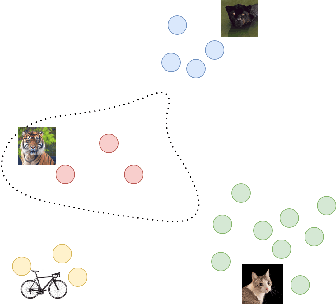
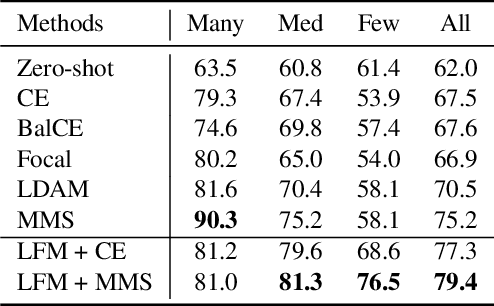
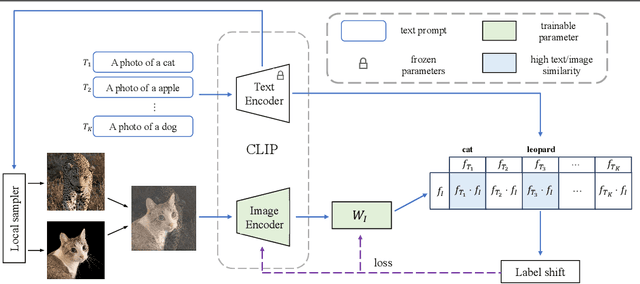
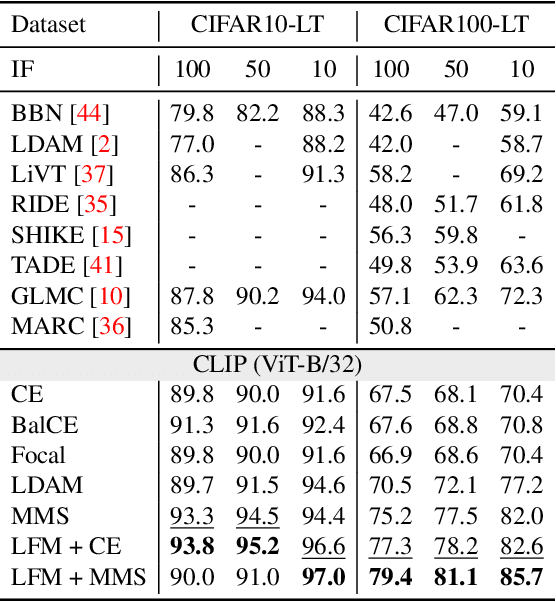
Abstract:In many real-world applications, the frequency distribution of class labels for training data can exhibit a long-tailed distribution, which challenges traditional approaches of training deep neural networks that require heavy amounts of balanced data. Gathering and labeling data to balance out the class label distribution can be both costly and time-consuming. Many existing solutions that enable ensemble learning, re-balancing strategies, or fine-tuning applied to deep neural networks are limited by the inert problem of few class samples across a subset of classes. Recently, vision-language models like CLIP have been observed as effective solutions to zero-shot or few-shot learning by grasping a similarity between vision and language features for image and text pairs. Considering that large pre-trained vision-language models may contain valuable side textual information for minor classes, we propose to leverage text supervision to tackle the challenge of long-tailed learning. Concretely, we propose a novel text-guided mixup technique that takes advantage of the semantic relations between classes recognized by the pre-trained text encoder to help alleviate the long-tailed problem. Our empirical study on benchmark long-tailed tasks demonstrates the effectiveness of our proposal with a theoretical guarantee. Our code is available at https://github.com/rsamf/text-guided-mixup.
Online Zero-Shot Classification with CLIP
Aug 23, 2024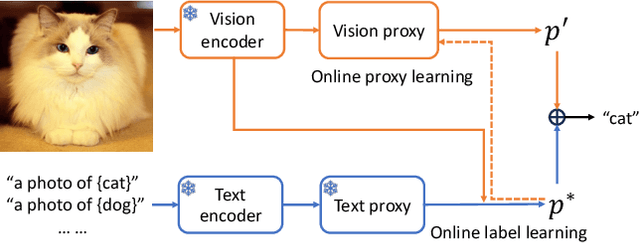
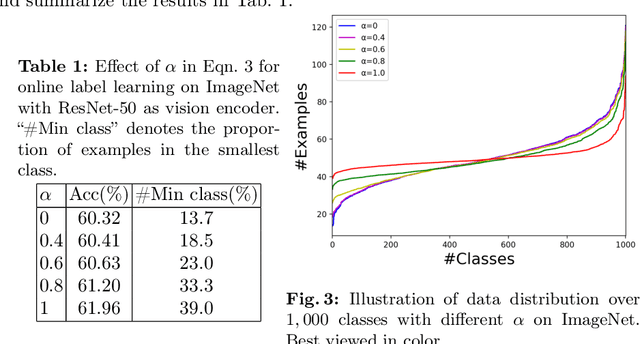


Abstract:Vision-language pre-training such as CLIP enables zero-shot transfer that can classify images according to the candidate class names. While CLIP demonstrates an impressive zero-shot performance on diverse downstream tasks, the distribution from the target data has not been leveraged sufficiently. In this work, we study a novel online zero-shot transfer scenario, where each image arrives in a random order for classification and is visited only once to obtain prediction immediately without storing its representation. Compared with the vanilla zero-shot classification, the proposed framework preserves its flexibility for online service while considering the statistics of the arrived images as the side information to capture the distribution of target data, which can help improve the performance of real-world applications. To tackle the challenge of effective online optimization, we first develop online label learning to model the target data distribution. Then, the proxy of each class in the vision space is further optimized with the proposed online proxy learning method to mitigate the modality gap between images and text. The convergence of both online strategies can be theoretically guaranteed. By combining the predicted label from the online label learning and proxy learning, our online zero-shot transfer method (OnZeta) achieves $78.94\%$ accuracy on ImageNet without accessing the entire data set. Moreover, extensive experiments on other 13 downstream tasks with different vision encoders show a more than $3\%$ improvement on average, which demonstrates the effectiveness of our proposal. Code is available at \url{https://github.com/idstcv/OnZeta}.
SeA: Semantic Adversarial Augmentation for Last Layer Features from Unsupervised Representation Learning
Aug 23, 2024Abstract:Deep features extracted from certain layers of a pre-trained deep model show superior performance over the conventional hand-crafted features. Compared with fine-tuning or linear probing that can explore diverse augmentations, \eg, random crop/flipping, in the original input space, the appropriate augmentations for learning with fixed deep features are more challenging and have been less investigated, which degenerates the performance. To unleash the potential of fixed deep features, we propose a novel semantic adversarial augmentation (SeA) in the feature space for optimization. Concretely, the adversarial direction implied by the gradient will be projected to a subspace spanned by other examples to preserve the semantic information. Then, deep features will be perturbed with the semantic direction, and augmented features will be applied to learn the classifier. Experiments are conducted on $11$ benchmark downstream classification tasks with $4$ popular pre-trained models. Our method is $2\%$ better than the deep features without SeA on average. Moreover, compared to the expensive fine-tuning that is expected to give good performance, SeA shows a comparable performance on $6$ out of $11$ tasks, demonstrating the effectiveness of our proposal in addition to its efficiency. Code is available at \url{https://github.com/idstcv/SeA}.
mPLUG-Owl3: Towards Long Image-Sequence Understanding in Multi-Modal Large Language Models
Aug 09, 2024



Abstract:Multi-modal Large Language Models (MLLMs) have demonstrated remarkable capabilities in executing instructions for a variety of single-image tasks. Despite this progress, significant challenges remain in modeling long image sequences. In this work, we introduce the versatile multi-modal large language model, mPLUG-Owl3, which enhances the capability for long image-sequence understanding in scenarios that incorporate retrieved image-text knowledge, interleaved image-text, and lengthy videos. Specifically, we propose novel hyper attention blocks to efficiently integrate vision and language into a common language-guided semantic space, thereby facilitating the processing of extended multi-image scenarios. Extensive experimental results suggest that mPLUG-Owl3 achieves state-of-the-art performance among models with a similar size on single-image, multi-image, and video benchmarks. Moreover, we propose a challenging long visual sequence evaluation named Distractor Resistance to assess the ability of models to maintain focus amidst distractions. Finally, with the proposed architecture, mPLUG-Owl3 demonstrates outstanding performance on ultra-long visual sequence inputs. We hope that mPLUG-Owl3 can contribute to the development of more efficient and powerful multimodal large language models.
Searching for Best Practices in Retrieval-Augmented Generation
Jul 01, 2024



Abstract:Retrieval-augmented generation (RAG) techniques have proven to be effective in integrating up-to-date information, mitigating hallucinations, and enhancing response quality, particularly in specialized domains. While many RAG approaches have been proposed to enhance large language models through query-dependent retrievals, these approaches still suffer from their complex implementation and prolonged response times. Typically, a RAG workflow involves multiple processing steps, each of which can be executed in various ways. Here, we investigate existing RAG approaches and their potential combinations to identify optimal RAG practices. Through extensive experiments, we suggest several strategies for deploying RAG that balance both performance and efficiency. Moreover, we demonstrate that multimodal retrieval techniques can significantly enhance question-answering capabilities about visual inputs and accelerate the generation of multimodal content using a "retrieval as generation" strategy.
 Add to Chrome
Add to Chrome Add to Firefox
Add to Firefox Add to Edge
Add to Edge